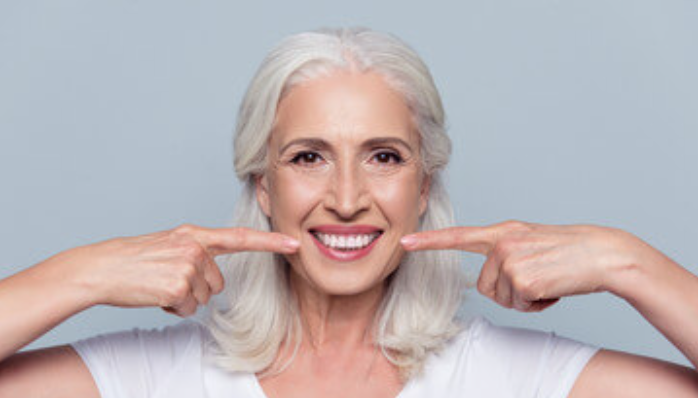-

Like
-

Views
*تأثير الإعلام العالمي على السلوك الصحي*
May 18, 2025

في عالمنا المترابط اليوم، أصبح الإعلام العالمي قوةً مؤثرةً في تشكيل نظرة الأفراد للمسائل الصحية وردود أفعالهم تجاهها. سواءً عبر التلفزيون أو الأخبار الإلكترونية أو منصات التواصل الاجتماعي، يطّلع الناس يوميًا على محتوى صحيّ يمكن أن يؤثر على سلوكياتهم وقراراتهم ورفاههم بشكل عام. من تحديات اللياقة البدنية المنتشرة إلى الحميات الغذائية الرائجة، لا يعكس الإعلام خياراتنا فحسب، بل غالبًا ما يوجّهها. ومع اتساع نطاق الوصول إلى المعلومات، تتزايد مسؤولية فهم كيفية تأثير الإعلام على الصحة العامة.
*الآثار الإيجابية لوسائل الإعلام على السلوك الصحي*
لعبت وسائل الإعلام دورًا محوريًا في تعزيز الوعي الصحي وتشجيع أنماط الحياة الصحية. وقد استخدمت حملات الصحة العامة محطات التلفزيون والمنصات الرقمية لنشر رسائل حول الوقاية من الأمراض، وأخبار التطعيم، والتمارين الرياضية، والصحة النفسية. كما لعبت وسائل التواصل الاجتماعي دورًا محوريًا في الحد من وصمة العار المرتبطة بالصحة النفسية، حيث يناقش المؤثرون والشخصيات العامة قضايا مثل القلق والاكتئاب وصورة الجسم بصراحة. ويشجع هذا الحضور الآخرين على طلب المساعدة والشعور بالوحدة.
علاوة على ذلك، تستخدم العديد من المنظمات الصحية الآن القنوات الرقمية للوصول إلى جمهور أوسع. تساعد مقاطع الفيديو التعليمية والرسوم البيانية والندوات الإلكترونية التفاعلية على تسهيل فهم المواضيع الصحية المعقدة وإيصالها إلى محتوى يسهل الوصول إليه. تُمكّن هذه الجهود الأفراد من اكتساب المعرفة، وتُلهمهم على اتباع سلوكيات صحية سليمة، وتدعم أهداف الصحة العامة العالمية.
*الآثار السلبية لوسائل الإعلام على السلوك الصحي*
على الرغم من هذه الفوائد، يُعدّ المشهد الإعلامي العالمي أيضًا بيئة خصبة للتضليل الصحي. فالادعاءات الكاذبة حول العلاجات المعجزة، واتجاهات الحمية الغذائية الخطيرة، والعلاجات غير المُثبتة، تنتشر بسرعة، لا سيما على المنصات التي تُكافئ المحتوى المثير بظهور أكبر. غالبًا ما يُروّج المؤثرون الذين يفتقرون إلى الخبرة الطبية للمكملات الغذائية، ومنتجات التخلص من السموم، أو التمارين الرياضية القاسية، مما يُولّد شعورًا زائفًا بالمصداقية والإلحاح لدى متابعيهم.
من المخاوف الأخرى تنامي ثقافة التشخيص الذاتي، حيث يعتمد الأفراد على الأعراض الموصوفة في المنشورات أو مقاطع الفيديو المنتشرة لاتخاذ قرارات صحية. قد يؤدي هذا إلى القلق، وسوء إدارة الحالات الطبية الحقيقية، وتأخير الاستشارة الطبية. إضافةً إلى ذلك، يمكن أن تؤثر صور الجسم المثالية والمعايير الصحية غير الواقعية التي تروج لها وسائل الإعلام سلبًا على الصحة النفسية، وخاصةً بين الشباب.
تحقيق التوازن
نظرًا لتأثيرها المزدوج، يجب التعامل مع دور الإعلام في تشكيل السلوك الصحي بحذر وتوازن. فبينما يمكن للإعلام أن يعزز التغيير الإيجابي، يجب أن يُقيّم محتواه نقديًا من قِبل المستهلكين وأن يُنشئه منتجوه بمسؤولية. يجب أن يتمتع الأفراد بثقافة صحية رقمية - أي القدرة على تقييم مصداقية المعلومات الصحية المتاحة على الإنترنت واتخاذ قرارات مستنيرة.
في الوقت نفسه، يجب على المنصات الإعلامية إعطاء الأولوية للشفافية والمساءلة. إن وضع علامات واضحة على المحتوى المدعوم، والتعاون مع أخصائيي الرعاية الصحية المعتمدين، وتنظيم الإعلانات الصحية المضللة، كلها عوامل تساهم في خلق بيئة إعلامية أكثر أمانًا. كما يقع على عاتق الحكومات والمؤسسات التعليمية وهيئات الصحة العامة دورٌ في ضمان توعية الجمهور، وخاصة الشباب، بكيفية التعرف على المعلومات الصحية المضللة والتعامل معها.
إن تأثير الإعلام العالمي على السلوك الصحي عميق ولا مفر منه. فهو قادر على تعزيز الوعي، وتحسين الحياة، وربط الناس بالموارد الصحية الحيوية. ومع ذلك، عند إساءة استخدامه أو استهلاكه دون تمحيص، فقد يُضلل ويُضر. يكمن الحل في عدم الانفصال عن الإعلام، بل في التفاعل معه بحكمة - البحث عن معلومات دقيقة وقائمة على الأدلة واستخدامها لاتخاذ خيارات صحية مدروسة ومستنيرة. في العصر الرقمي، يمكن أن يكون الإعلام إما أداة لتمكين الصحة أو أداة للتشويش - فالخيار يعتمد على...حول كيفية استخدامنا له.
THE INFLUENCE OF GLOBAL MEDIA ON HEALTH BEHAVIOR
In today’s interconnected world, global media has become a powerful force in shaping how individuals perceive and respond to health-related matters. Whether through television, online news, or social media platforms, people are exposed daily to health content that can influence their behaviors, decisions, and overall well-being. From viral fitness challenges to trending diets, media doesn’t just reflect our choices—it often directs them. As access to information expands, so does the responsibility to understand how media shapes public health.
POSITIVE EFFECTS OF MEDIA ON HEALTH BEHAVIOR
Media has played a critical role in promoting health awareness and encouraging healthier lifestyles. Public health campaigns have used television stations and digital platforms to spread messages about disease prevention, vaccination news, exercises, and mental wellness. Social media has also been instrumental in reducing stigma around mental health, as influencers and public figures openly discuss issues like anxiety, depression, or body image. This visibility encourages others to seek help and feel less alone.
Moreover, many health organizations now use digital channels to reach wider audiences. Educational videos, infographics, and interactive webinars help break down complex health topics into accessible content. These efforts empower individuals with knowledge, inspire health-seeking behavior, and support global public health goals.
NEGATIVE EFFECTS OF MEDIA ON HEALTH BEHAVIOR
Despite these benefits, the global media landscape is also a breeding ground for health misinformation. False claims about miracle cures, dangerous diet trends, and unproven treatments can spread rapidly, especially on platforms that reward sensational content with higher visibility. Influencers with no medical background often promote supplements, detox products, or extreme exercise routines, creating a false sense of credibility and urgency among their followers.
Another concern is the rise of self-diagnosis culture, where individuals rely on symptoms described in viral posts or videos to make health decisions. This can lead to anxiety, mismanagement of real medical conditions, and the delay of professional consultation. Additionally, idealized body images and unrealistic health standards promoted by media can negatively impact mental health, especially among young people.
STRIKING A BALANCE
Due to its dual impact, the role of media in shaping health behavior must be approached with caution and balance. While media can promote positive change, its content must be critically evaluated by consumers and responsibly created by content producers. Individuals must be equipped with digital health literacy—the ability to assess the credibility of health information found online and make informed decisions.
At the same time, media platforms must prioritize transparency and accountability. Clear labeling of sponsored content, collaboration with certified health professionals, and the regulation of misleading health ads can contribute to a safer media environment. Governments, educational institutions, and public health agencies also have a role to play in ensuring that the public, especially young people, are taught how to recognize and respond to health misinformation.
The influence of global media on health behavior is profound and unavoidable. It has the capacity to drive awareness, improve lives, and connect people to vital health resources. Yet, when misused or consumed uncritically, it can mislead and harm. The key is not to disconnect from media, but to engage with it wisely—seeking accurate, evidence-based information and using it to make thoughtful, informed health choices. In the digital age, media can either be a tool for health empowerment or confusion—the choice depends on how we use it.








 Espees - CELWA
Espees - CELWA KingsPay Naira - CELWA
KingsPay Naira - CELWA
Share comment